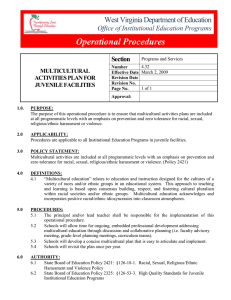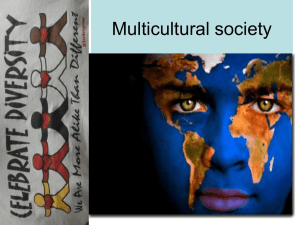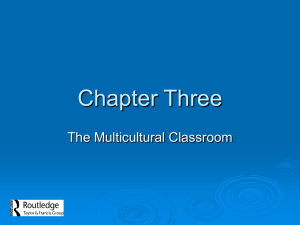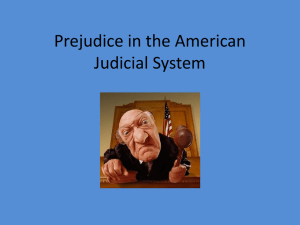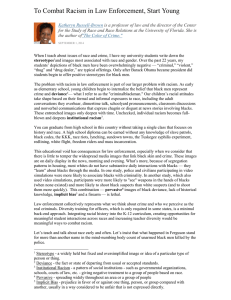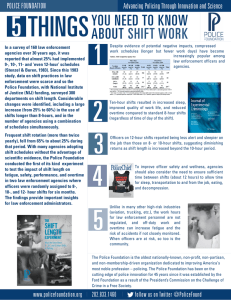Human Relations in a Diverse Society
advertisement
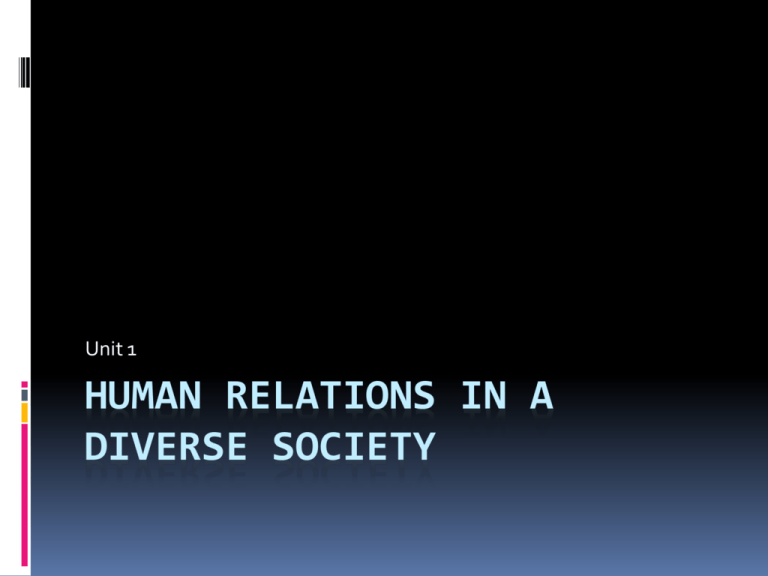
Unit 1 HUMAN RELATIONS IN A DIVERSE SOCIETY To Do in Unit 1 Introduce Yourself Read Chapter 1 and 4 in Multicultural Law Enforcement Attend the Seminar (Graded) Respond to the Discussion Board (Graded) Visit Extra! Extra! The 21st Century The 21st century will be the century in which we redefine ourselves as the first country in world history which is literally made up of every part of the world. Mr. Kenneth Prewitt, Director of U.S. Census Bureau, 1998-2001 What is Multiculturalism? Existence within one society of diverse ethnic, cultural, and racial groups Groups that maintain their unique cultural identity While accepting and participating in the larger society’s legal, political, and economic system What is Culture? A way of life developed and communicated by a group of people Consciously or unconsciously, to subsequent generations It consists of ideas, habits, attitudes, customs, and traditions That help people to create standards for a group of people to coexist, making a group of people unique In its most basic sense, culture is a set of patterns for survival and success That a particular group of people has developed What is Race? A group of persons of (or regarded as of) common ancestry Physical characteristics are often used to identify people of different races These characteristics should not be used to identify ethnic groups, which can cross racial lines What is an Ethnic group? Group of people who conceive of themselves And who are regarded by others As alike because of their common ancestry, language, and physical characteristics What is Ethnicity? Refers to the background of a group with unique language, ancestral, often religious, and physical characteristics Broadly characterizes a religious, racial, national, or cultural group What is Ethnocentrism? Using the culture of one’s own group as a standard for the judgment of others Or thinking of it as superior to other cultures that are merely different What is Bias? Preference or an inclination to make certain choices that may be positive (bias toward excellence) Or negative (bias against people) Often resulting in unfairness What is Prejudice? A judgment or opinion formed before facts are known Or to cast a group of people in a favorable or unfavorable light Usually without just grounds or sufficient information What is Discrimination? The denial of equal treatment to groups because of their racial, ethnic, gender, religious, or other form of cultural identity. Demographics Characteristics of a population As classified by age, sex, income, etc. For market research, sociological analysis, etc. Webster’s New World Dictionary What is Diversity? The term used to describe a vast range of similarities and differences that have become factors requiring attention in living and working together Often applied to the communication and training interventions in an organization that seek to deal with the interface of people who are different from each other Reactions to Multicultural Population Intolerance Tolerance Appreciation Celebration Reactions to Diversity Past and Present Always been a difficult issue All groups subject to the same treatment – Irish, Germans, Italians, Asians, etc. Not all immigrants came here willingly Foreign (2002) Born in the U.S. 52.2 percent from Latin America 25.5 percent from Asia 14.0 percent from Europe 8.3 percent from other regions in the world The Dimensions of Diversity Primary Dimensions Age Ethnicity Gender Mental/physical abilities and characteristic Race Sexual orientation Secondary Dimensions of Diversity Communication style Education Family status Military experience Organizational role and level Religion Source: Marilyn Loden, Implementing Diversity Diversity Wheel Facilitates Understanding of a Broad Range of Primary and Secondary Dimensions of Diversity Prejudice in Law Enforcement Mandated changes to reduce prejudice Peer and co-worker relationship and norming behaviors Prejudice reduction through training and education Community-Based Policing Enables police officers to meet with community groups and learn of their concerns A fact of life for most city police and sheriff's departments Storefront offices provide police accessibility A democratic style of policing that allows for openness and dialogue between the police and the community Language Barriers and Law Enforcement Changing demographics and multicultural communities Limited number of bilingual officers Serious and tragic consequences resulting from language and communication barriers • Cross-cultural communication skills needed by all officers Unit 2 Read Chapter 2 and 3 in Multicultural Law Enforcement Attend the weekly Seminar Respond to the Discussion Board Complete and Submit the Unit 2 Project Visit Extra! Extra! Contact me: Roger Humber (Prof) rhumber@kaplan.edu rhumber366 (AIM) 334-269-6729 (Home)


